

At the southernmost point in New York is Conference House Park, which Kevin visited a few times over the past quarter century, always finding something new to document. The park is located in Tottenville, Staten Island’s most distant neighborhood. On my last visit to this park, the Biddle House reopened to the public, hosting an exhibit by the Tottenville Historical Society.
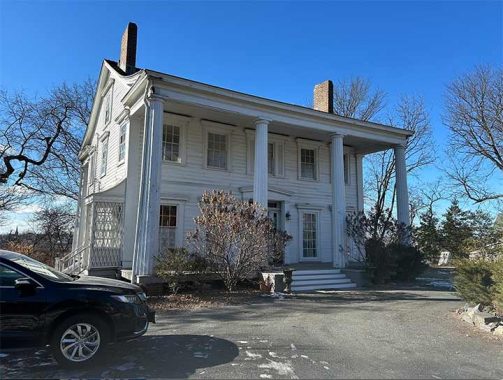
Its namesake Henry Hogg Biddle built the home in the 1840s on farmland that belonged to the Billopp family who lived in the nearby Conference House. Because of their loyalist views, their land was confiscated at the end of the Revolutionary War. Biddle’s heirs sold the house to sculptor George T. Brewster in 1904, and in 1942 the Petersen family purchased it before it passed to the Parks Department.
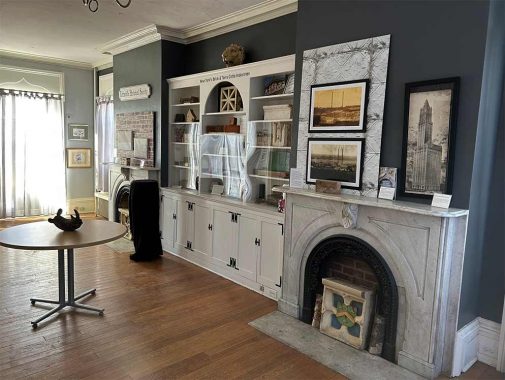
The exhibit on display in the living room was on the brick industry of Staten Island. Remember Kreischerville? Pick up an old brick and you may see a company’s name written on it with its place of origin as Staten Island. Clay for the bricks was locally sourced in pits that later reverted to nature as ponds, at the island’s only State Park.
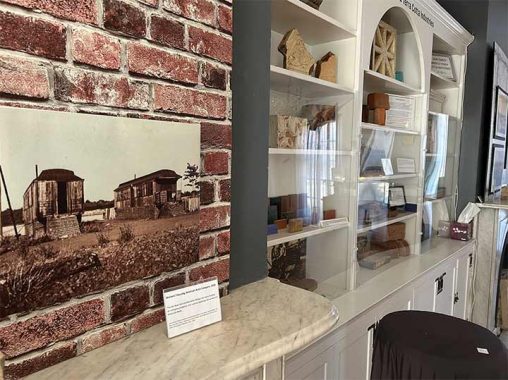
The photo that interested me was from the NYPL collection that shows workers housing in the 1920s at the American Brick Company. The dwellings are former elevated train cars that ran on the Brooklyn Bridge. These days when a subway car is retired from service, it is more likely to end up at the bottom of the ocean as an artificial reef. Train service on the Brooklyn Bridge ended in 1944 as the city eliminated some of Brooklyn’s elevated lines for underground transit.
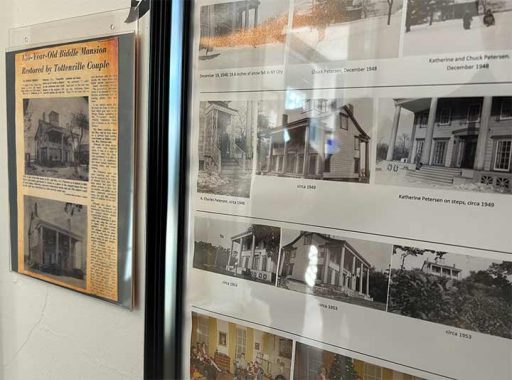
When the Petersen family purchased the Biddle House, they recognized its historical value and renovated it in a manner that preserved its appearance. A Staten Island Advance article from 1966 notes that the Parks Department had plans to include the house within an expanded Conference House Park.
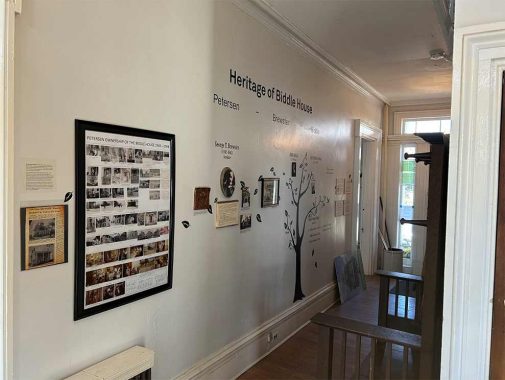
In the main hallway are illustrations of the three families that owned this house. Its last resident, Chuck Petersen, wrote about his life here in the book Growing up in the Historic Biddle House. Some of the historic houses under Parks’ ownership have caretakers residing inside them, such as the nearby Conference House. The Biddle House still has its kitchen, bathtub and bedroom, but the agency prefers to use this house as a gallery and office. Likewise with the Rutan-Beckett House that is also inside this park.
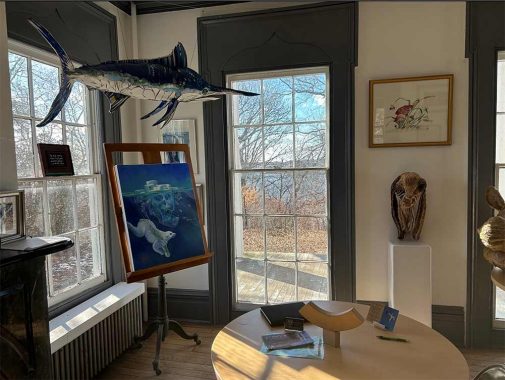
On my visit to the Biddle House, the small room next to the kitchen was hosting an art exhibit by Donna Napoli-Steele and her students at the Notre Dame Academy. Titled A Closer Look, Vulnerable and Endangered, its works related to wildlife threatened by pollution, overdevelopment, and climate change. The view from the window here faces Perth Amboy, New Jersey, a city worthy of an “out of town” page. It has a downtown with many architectural styles and a long history dating to 1683.
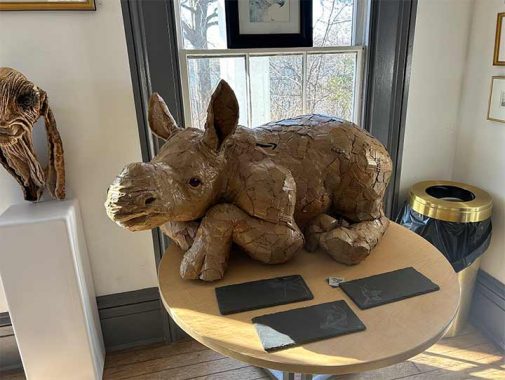
The artwork that resonated the most with the present state of affairs on Staten Island is this rhino sculpture made of cardboard. Look carefully and you’ll see an Amazon arrow. The borough has a 975,000-square foot warehouse near the Goethals Bridge that made history for unionizing in 2022.
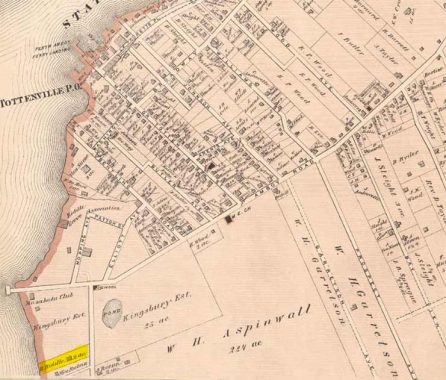
Looking back in time with maps, in 1874, the Biddle family had two properties in Tottenville: this two-acre parcel (marked in yellow), and the Biddle Grove Association, a private park for picnics that is today the undeveloped Tottenville Shore Park.
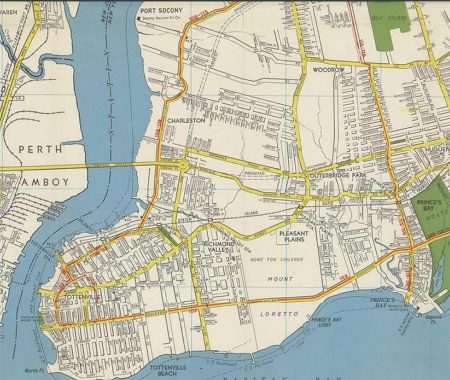
Moving on to 1963 with this Hagstrom map, we see Conference House Park on a narrow sliver of land around its namesake, with the extreme tip of New York covered in a grid of planned streets. The ferry to Perth Amboy ceased later in that year. I can’t imagine how people could rely on maps with streets that did not yet exist.
[As late as the 1970s, most of the streets shown on this map, including most streets in Tottenville south of Amboy Road and west of Yetman Avenue, were dreams and hopes of developers; in Tottenville, most were built out in the 1980s. –Ed.]
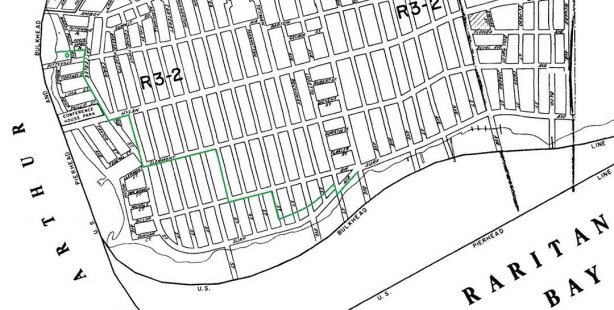
A closer look at the neighborhood that wasn’t is this 1961 grid from the City Planning Commision, where I added green lines to show the present borders of Conference House Park. A year later the city expanded the park’s borders but Hagstrom apparently did not get the update when it made its 1963 atlas.
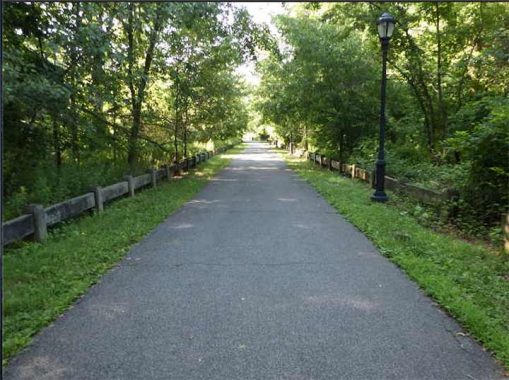
Some of the paths inside the park have the width of a street, hinting at the grid that was absorbed by the park. I could tell you more about the park’s features but Kevin had them chronicled in detail on his visit here in 2010.
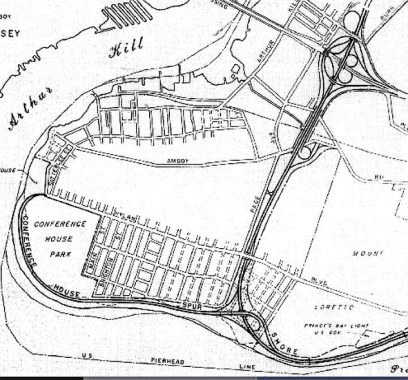
Although the park preserved the natural scenery at Wards Point, Robert Moses often designated parks as buffers and right-of-ways for highways. This undated map from the 1960s which appears on Steve Anderson’s NYC Roads, shows the proposed Shore Front Drive terminating at the Conference House. Had it been realized, this road would have severed residents from the shoreline in the same manner as Belt Parkway in Brooklyn. It would have given Tottenville a quicker drive to the Verrazano Bridge, perhaps dooming the last active train line on the island. Fortunately this highway was among the Moses projects that were rejected.
A look inside Biddle House, Chuck Petersen Collection
The Biddle House is the seat of the Tottenville Historical Society
You can learn more about the history of this park by visiting each of the hyperlinks posted in the essay above.
Sergey Kadinsky is the author of Hidden Waters of New York City: A History and Guide to 101 Forgotten Lakes, Ponds, Creeks, and Streams in the Five Boroughs (2016, Countryman Press), adjunct history professor at Touro University and the webmaster of Hidden Waters Blog.
As always, “comment…as you see fit.” I earn a small payment when you click on any ad on the site.
2/15/25

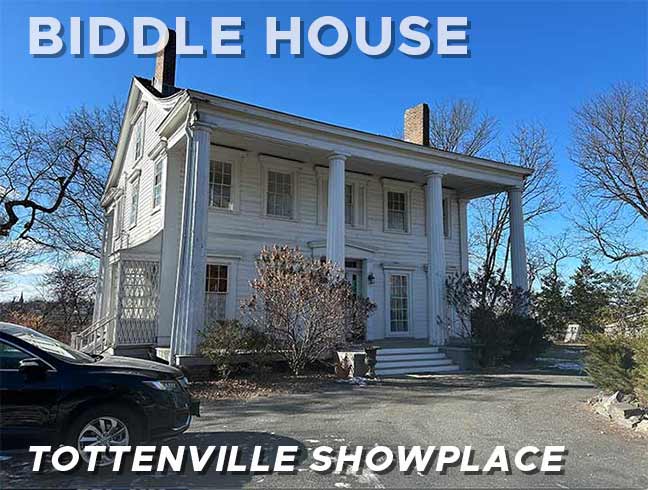
2 comments
I spent much time sitting on the Conference House lawn….while studying for HS Regents exams, and enjoying the serenity and beautiful views of passing boats
“Boardwalk Empire” used the Biddle House for some episodes set in a rural Maryland hideout. I recognized it immediately.